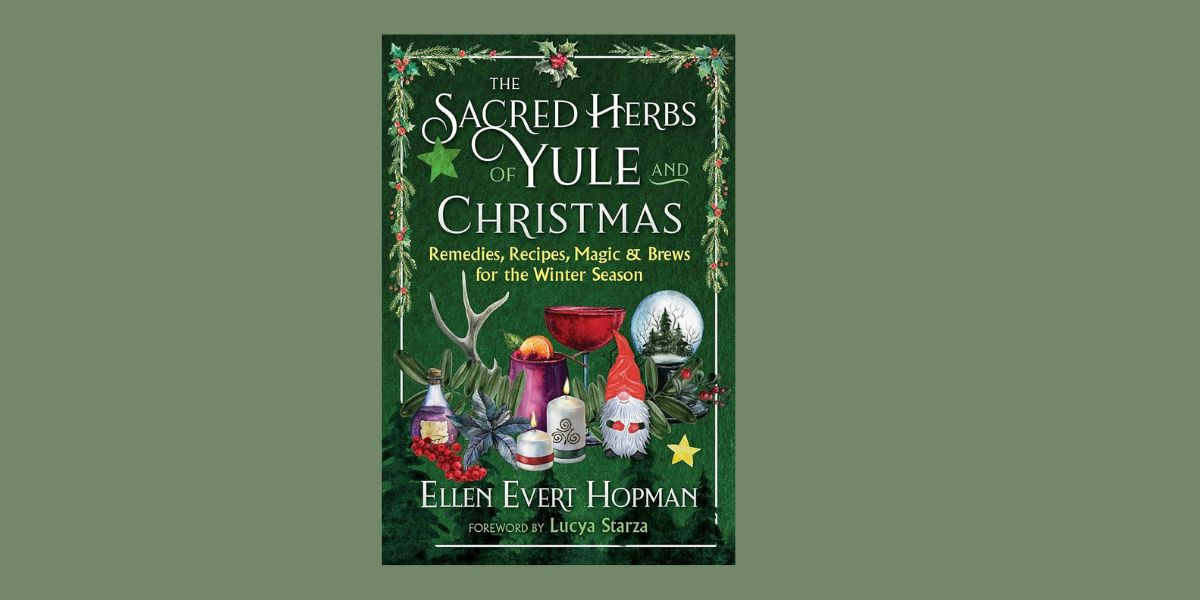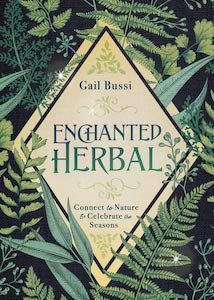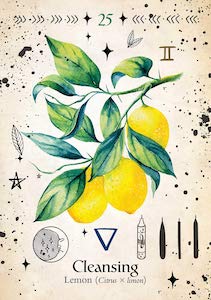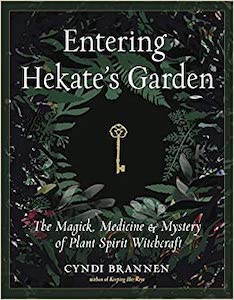
The Sacred Herbs of Yule and Christmas: Remedies, Recipes, Magic, and Brews for the Winter Season, by Ellen Evert Hopman
Destiny Books, 1644117800, 344 pages, September 2023
Sit down and clear your lap to make room for Ellen Evert Hopman’s The Sacred Herbs of Yule and Christmas: Remedies, Recipes, Magic, and Brews for the Winter Season. This book is full of all of the tips, backstories, and recipes that you could possibly need to navigate through the winter months.
I was born in January and winter has always been my favorite season. It’s warm from the inside, stark and beautiful on the outside, full of promise as one turns the calendar page to a new year, and the perfect time to set intentions, rest, and of course, commune with friends and family.
In this memorable book, Hopman covers all of the traditions and recipes of Yule and Christmas found around the world–and there’s quite a few! If one really wanted to participate in all of the rituals and traditions, it would be advised to put pen to paper and note the various dates and traditions. December 13 for Saint Lucia Day, December 6, the day that Santa arrives in Switzerland, December 16, the start of the Christmas season in Venezuela, and Twelfth Night.
There is a primer to the book that advises on how to prepare herbs including choosing good quality herbs, making teas, salves, tinctures, poultices, and using essential oils. Hopman also writes about crafting spells, magical properties of the color and seasons of plants, and the basics of spell work.
Part One focuses on traditions, rites, food, and drinks of the season. The characters are both benign and also “fearsome,” from the Yule Lads of Iceland to Polish werewolves. “First footing” is found in many parts of Europe, a “type of magical practice designed to bring luck in the New Year and Christmas.”1 There are rituals of fire involving candles, logs, and communal festivals, along with fascinating yuletide divinations for marriage, to bring back the sun, and for luck as well as accompanying recipes. Hopman shares wonderful rituals for everything from taking down the seasonal greenery and the winter solstice.
This comprehensive section covers Christmas traditions from around the world with accompanying recipes from Austria to Wales, with places such as Venezuela, Spain, and Italy also represented. And what would seasonal merrymaking be without libations? There are a few recipes for the hot toddy, liqueurs, infused gin, and martinis too!
Part Two covers the magical and medicinal herbs of the winter. The plants profiled “all have a special connection with Yuletide and Christmas, and are valuable winter medicines.”2 The herbs run alphabetically from Allspice to Vanilla, and for each she writes of corresponding legends, medicinal properties, magical uses, and the herb at Yuletide, plus recipes for each.
For example, for Pine she writes about the Greek goddess Cybele and her lover, Attis, sharing the tale of how the pine became the symbol of eternal hope. She also writes of the origins of the tradition of the Christmas tree and also the meaning of standard ornaments, pinecones for motherhood and fertility, stars for guidance, bells for joy, and… carrots for success in cooking! There’s even a recipe for conifer crème brulee.
The range of traditions covered by Hopman is quite impressive. Someyou might be familiar due to your familial history, others will surely be completely new to you. The origins of Santa’s reindeer, benevolent witches bringing treats in Italy, and other rites and rituals of the season are shared. To be honest, most of what we celebrate is a mish-mash of many cultures and traditions, all of which honor the season, bring in the light, and aid us in navigating the dark. As Hopman’s aim is to “explore the roots of this ancient celebration (of Yule) from the magical and medicinal herbs of winter to the traditions, rites, foods, and drinks of the season, with the intention of deepening our understanding of the past so that we can carry it forward with purpose, respect, and joy.”3
Another neat feature of the book are the colored-page inserts of Christmas imagery. They depict different Yuletide scenes and have little informative explanations next to this. The pictures add to the reader’s experience, bringing to life the words on the page.
Hopman is a well-regarded master herbalist and lay homeopath, who has been a Druidic initiate since 1984. She is also the author of Celtic herbals and Druid novels. In other words, Hopman is highly qualified, but more importantly, passionate and knowledgeable about herbs and also Yuletide.
My most favorite concept from the book, which I now carry with me, is that plants want to heal us. I highly recommend The Sacred Herbs of Yule and Christmas for those looking to embrace this time of the year with a renewed awe and deeper understanding of the rituals we use to celebrate this season. I know I’ll be spending plenty of time testing out the recipes and enjoying the celebrations with more purposeful intentions.
Anne Greco is a non-fiction writer who writes about her life experiences and travels with humor, keen observations, and the hope that her words will remind us that “we’re all just walking each other home.” Her book, Serendipity: Chance Pilgrimages, tells the story of Anne encountering her places of power. As she reconnects with herself at each site, Anne also develops a deeper understanding and appreciation of her connection to both the seen and unseen worlds. Learn more about her work here: http://annegrecowriter.com.









